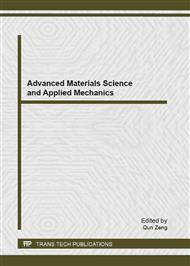p.105
p.111
p.115
p.119
p.123
p.128
p.135
p.140
p.145
Effect of In2S3 Buffer Layer in TiO2/In2S3/CuInS2 Structure
Abstract:
The anodized TiO2 nanotube arrays (TNAs) have a benefit to provide large surfaces and straight electron transmitting routes to the electrode. However, it is difficult to fulfill with solid state electrolytes or photosensitive materials into the long TiO2 nanotubes. The substrate of Ti/wave-like TiO2 was prepared by peel-off the TNAs. The In2S3 buffer layer between wave-like TiO2 and CuInS2 determines the photosensitivity of the Ti/wave-like TiO2/In2S3/CuInS2 thin structure. The In2S3 and CuInS2 are well-crystallized at 300oC. The CuInS2 phase forms in In2S3 layer due to Cu diffusion independent on the slight loss of sulfur. The CuInS2 direct deposition on Ti/wave-like TiO2 substrate can not exhibit photosensitivity. When CuInS2 deposited on In2S3 to form Ti/wave-like TiO2/In2S3/CuInS2 structure, the short-circuit current and the open-circuit voltage increase with the thickness increase of In2S3 layer while illuminated by 50 mW/cm2 white light.
Info:
Periodical:
Pages:
123-127
Citation:
Online since:
May 2013
Authors:
Keywords:
Price:
Сopyright:
© 2013 Trans Tech Publications Ltd. All Rights Reserved
Share:
Citation:


